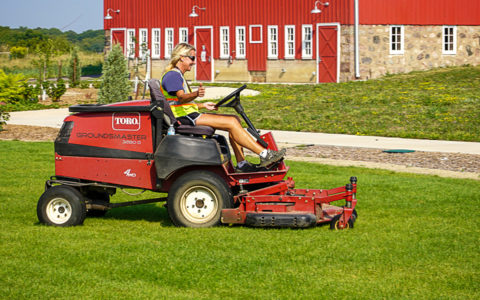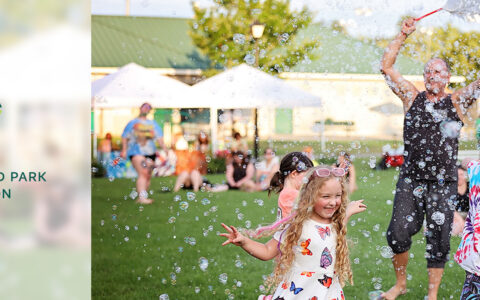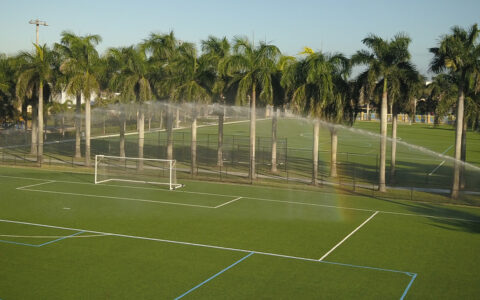Picture this: It’s 70 degrees and the third quarter of the Rose Bowl Game® and you’re watching from the stands of the iconic stadium. You take your eyes off the game and glance up to see the sun setting over the San Gabriel Mountains. At the base of those mountains, 300 acres of parkland are beautifully lit up during the golden hour. You take it in. You’re in a stadium, yes, but you’re also amid an experience — an experience only the Rose Bowl Stadium can offer.
2022 is a monumental year in Pasadena, California, as it’s the centennial anniversary of the Rose Bowl Stadium. Citizens and fans may not witness it, but the work that goes into the field to keep it going is truly remarkable. So, what does it take to keep this world-famous destination pristine? A talented turf management team, for starters.
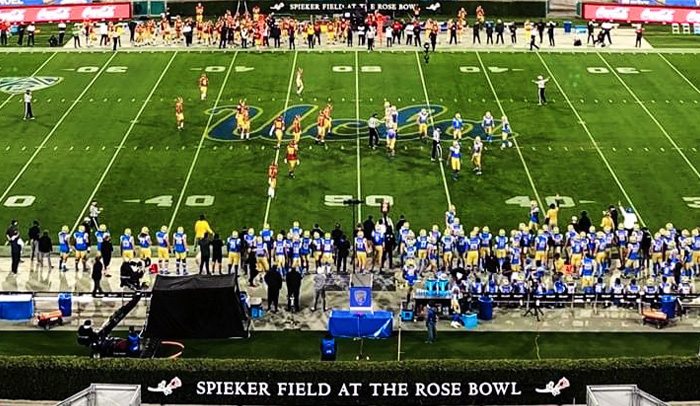
Challenges
1: Events That Stress the Turf
The Rose Bowl Stadium’s turf management team is led by Miguel Yepez the Field Superintendent. Yepez has been managing the Rose Bowl Stadium turf for 20 years, starting as an assistant, and after 18 years, transitioning to superintendent. When Yepez began at the Rose Bowl Stadium, holding non-football events on-site was rare. Today, dozens of events take place in the stadium throughout the year.
The stadium hosts events for the community, giving residents a chance to walk onto the field and appreciate the beauty and magnitude of the venue. Graduations were hosted on the field during the pandemic, and an annual high school rivalry football game, the Turkey Tussle, is also played in the Rose Bowl Stadium. It has become an event venue and historic site on top of its original purpose as a football stadium, something that poses a real challenge for the staff.
“Unlike 20 years ago, our team rarely has downtime. Sometimes we’ll have a concert on a Friday and a game two weeks later, making for a very tight turnaround. Turf is covered for up to eight days for a concert and afterward, your grass is gone. There’s no way to salvage it in a two-week timeframe — and that’s when we work even harder to pull off a full field resod,” says Yepez.
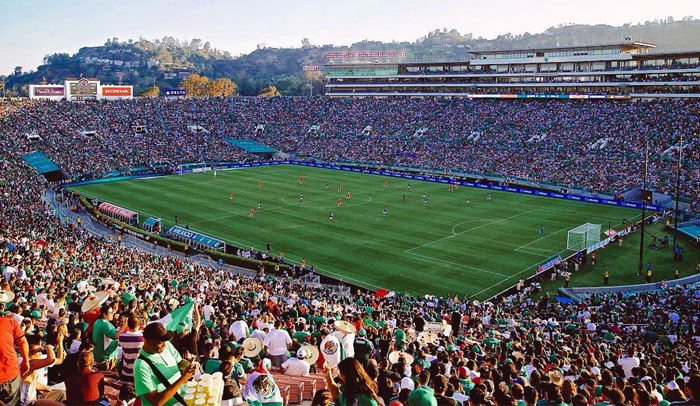
During 2022, the Rose Bowl Stadium’s centennial year, they’re hosting over 20 large events and 200 smaller events. Though events can be a challenge, each event held at the stadium is a reminder of the venue’s evolution. From a beautiful stadium built to host one college football game per year — the Rose Bowl — to a historic event venue that has hosted World Cup events, Olympic competitions, five Super Bowls and many notable concerts.
“The Rose Bowl Stadium was built 100 years ago but has evolved and almost gotten younger since. We like to refer to it as a ‘modern elder,’ wise and respected, but also trendy and relatable to the younger generations,” says Jens Weiden, Rose Bowl Stadium Chief Executive Officer / General Manager.
2: Maintaining Employees
Maintaining knowledgeable employees is a challenge, as well. Yepez has two full-time assistants and another 10 part-time employees who are utilized during busy weeks. At times, he’s had to get creative to complete tasks. For example, he doesn’t have enough manpower to put the rain tarps on when the field needs protecting — three pairs of hands simply aren’t enough. That’s why Yepez enlists help from an outside contractor, problem-solving just like turf superintendents around the country do daily. Every turf management job has its hiccups, no matter how iconic or important the venue is.
Behind the Scenes
Yepez’s team mows the Rose Bowl field every single day. Having events on the field so often, they’re tasked with ensuring the grass doesn’t stop growing. That means fertilizing often, which makes the grass grow quickly and need mowing daily. “If the turf stops growing, it won’t recover from the stress of events. It gets mowed every day like a golf green — and that’s exactly what we want it to look like,” says Yepez. Their team uses Toro® Reelmaster® mowers and irrigation to achieve that precise, highly manicured look.
“We pride ourselves on our field. It’s what enables people to come here and have some of the most iconic moments on the grass — and a partner like Toro enables us to provide that experience,” says Weiden.
“We have a very selective group of sponsors, as our brand is a big asset. Toro is an example of a wonderful brand partner that helps us get better,” says Weiden. “They’re part of this story and experience where people come and have some of the most iconic moments on the grass.”
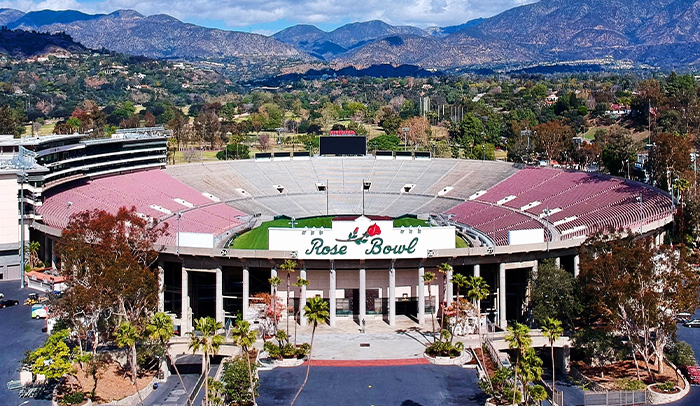
Beaming With Pride
The City of Pasadena cherishes the history of its oldest structures, including the Rose Bowl Stadium. They’ve continually invested in the stadium, as have many citizens, to upgrade the experience and preserve the historic integrity of the National Historic Landmark for years to come. The $200 million renovation program completed in 2014 is a prime example. “If we continue to invest in the stadium, it shows the community and the people we care about that it’s going to be relevant for another 100 years,” states Weiden.
The Rose Bowl Stadium is a landmark to many — including Yepez. Born and raised in Pasadena, Yepez first visited the stadium as a child and has witnessed its connection to the community firsthand. “This place for me is iconic. Maintaining something so special is an honor that I don’t take for granted,” says Yepez. “I want my kids to be able to enjoy the field just as I did, alongside many more generations to come. That’s what fuels me.”
Watch for More Iconic Grounds Profiles
Where will Iconic Grounds go next? Follow @ToroGrounds on Twitter for updates and look for the next issue of Grounds for Success.

